American Studies books and publications

The Rise and Fall of Protestant Brooklyn
Blumin and Altschuler tell the story of nineteenth-century Brooklyn's domination by upper- and middle-class Protestants with roots in Puritan New England. This lively history describes the unraveling of the control they wielded as more ethnically diverse groups moved into the "City of Churches" during the twentieth century.
Before it became a prime American example of urban ethnic diversity, Brooklyn was a lovely and salubrious "town across the river" from Manhattan, celebrated for its churches and upright suburban living. But challenges to this way of life issued from the sheer growth of the city, from new secular institutions—department stores, theaters, professional baseball—and from the licit and illicit attractions of Coney Island, all of which were at odds with post-Puritan piety and behavior.
Despite these developments, the Yankee-Protestant hegemony largely held until the massive influx of Southern and Eastern European immigrants in the twentieth century. As The Rise and Fall of Protestant Brooklyn demonstrates, in their churches, synagogues, and other communal institutions, and on their neighborhood streets, the new Brooklynites established the ethnic mosaic that laid the groundwork for the theory of cultural pluralism, giving it a central place within the American Creed.
https://www.cornellpress.cornell.edu/book/9781501765513/the-rise-and-fall-of-pr…

Hijacking the Agenda: Economic Power and Political Influence 1st Edition
Why are the economic interests and priorities of lower- and middle-class Americans so often ignored by the U.S. Congress, while the economic interests of the wealthiest are prioritized, often resulting in policies favorable to their interests? In Hijacking the Agenda, political scientists Christopher Witko, Jana Morgan, Nathan J. Kelly, and Peter K. Enns examine why Congress privileges the concerns of businesses and the wealthy over those of average Americans. They go beyond demonstrating that such economic bias exists to illuminate precisely how and why economic policy is so often skewed in favor of the rich.
The authors analyze over 20 years of floor speeches by several hundred members of Congress to examine the influence of campaign contributions on how the national economic agenda is set in Congress. They find that legislators who received more money from business and professional associations were more likely to discuss the deficit and other upper-class priorities, while those who received more money from unions were more likely to discuss issues important to lower- and middle-class constituents, such as economic inequality and wages. This attention imbalance matters because issues discussed in Congress receive more direct legislative action, such as bill introductions and committee hearings. While unions use campaign contributions to push back against wealthy interests, spending by the wealthy dwarfs that of unions.
The authors use case studies analyzing financial regulation and the minimum wage to demonstrate how the financial influence of the wealthy enables them to advance their economic agenda. In each case, the authors examine the balance of structural power, or the power that comes from a person or company’s position in the economy, and kinetic power, the power that comes from the ability to mobilize organizational and financial resources in the policy process. The authors show how big business uses its structural power and resources to effect policy change in Congress, as when the financial industry sought deregulation in the late 1990s, resulting in the passage of a bill eviscerating New Deal financial regulations. Likewise, when business interests want to preserve the policy status quo, it uses its power to keep issues off of the agenda, as when inflation eats into the minimum wage and its declining purchasing power leaves low-wage workers in poverty. Although groups representing lower- and middle-class interests, particularly unions, can use their resources to shape policy responses if conditions are right, they lack structural power and suffer significant resource disadvantages. As a result, wealthy interests have the upper hand in shaping the policy process, simply due to their pivotal position in the economy and the resulting perception that policies beneficial to business are beneficial for everyone.

Scaling Migrant Worker Rights: How Advocates Collaborate and Contest State Power
As international migration continues to rise, sending states play an integral part in "managing" their diasporas, in some cases even stepping in to protect their citizens' labor and human rights in receiving states. At the same time, meso-level institutions—including labor unions, worker centers, legal aid groups, and other immigrant advocates—are among the most visible actors holding governments of immigrant destinations accountable at the local level. The potential for a functional immigrant worker rights regime, therefore, advocates to imagine a portable, universal system of justice and human rights, while simultaneously leaning on the bureaucratic minutiae of local enforcement. Taking Mexico and the United States as entry points, Scaling Migrant Worker Rights analyzes how an array of organizations put tactical pressure on government bureaucracies to holistically defend migrant rights. The result is a nuanced, multilayered picture of the impediments to and potential realization of migrant worker rights.
https://www.ucpress.edu/book/9780520384453/scaling-migrant-worker-rights

Adventure Capitalism
Imagine a capitalist paradise. An island utopia governed solely by the rules of the market and inspired by the fictions of Ayn Rand and Robinson Crusoe. Sound far-fetched? It may not be. The past half century is littered with the remains of such experiments in what Raymond Craib calls “libertarian exit.” Often dismissed as little more than the dreams of crazy, rich Caucasians, exit strategies have been tried out from the southwest Pacific to the Caribbean, from the North Sea to the high seas, often with dire consequences for local inhabitants. Based on research in archives in the US, the UK, and Vanuatu, as well as in FBI files acquired through the Freedom of Information Act, Craib explores in careful detail the ideology and practice of libertarian exit and its place in the histories of contemporary capitalism, decolonization, empire, and oceans and islands. Adventure Capitalism is a global history that intersects with an array of figures: Fidel Castro and the Koch brothers, American segregationists and Melanesian socialists, Honolulu-based real estate speculators and British Special Branch spies, soldiers of fortune and English lords, Orange County engineers and Tongan navigators, CIA operatives and CBS news executives, and a new breed of techno-utopians and an old guard of Honduran coup leaders. This is not only a history of our time but, given the new iterations of privatized exit—seasteads, free private cities, and space colonization—it is also a history of our future.

State of Disaster
Natural disasters and the dire effects of climate change cause massive population displacements and lead to some of the most intractable political and humanitarian challenges seen today. Yet, as Maria Cristina Garcia observes in this critical history of U.S. policy on migration in the Global South, there is actually no such thing as a "climate refugee" under current U.S. law. Most initiatives intended to assist those who must migrate are flawed and ineffective from inception because they are derived from outmoded policies. In a world of climate change, U.S. refugee policy simply does not work.
Garcia focuses on Central America and the Caribbean, where natural disasters have repeatedly worsened poverty, inequality, and domestic and international political tensions. She explains that the creation of better U.S. policy for those escaping disasters is severely limited by the 1980 Refugee Act, which continues to be applied almost exclusively for reasons of persecution directly related to politics, race, religion, and identity. Garcia contends that the United States must transform its outdated migration policies to address today's realities. Climate change and natural disasters are here to stay, and much of the human devastation left in their wake is essentially a policy choice.
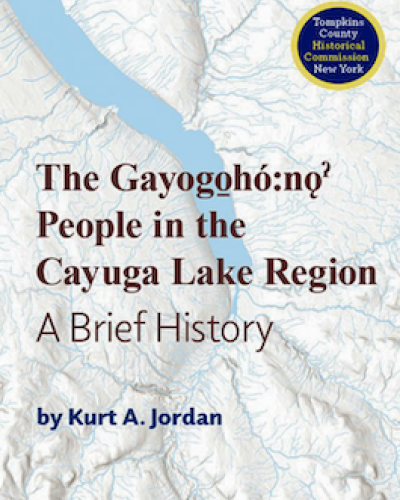
The Gayogo̱hó꞉nǫɁ People in the Cayuga Lake Region: A Brief History with the Tompkins County Historical Commission
The Gayogo̱hó꞉nǫɁ People in the Cayuga Lake Region Published by the Tompkins County Historical Commission in 2022 Professor Kurt Jordan's history of the Gayogo̱hó꞉nǫɁ brings forward a part of the history of the Cayuga Lake region that had been formerly romanticized or forgotten altogether. It begins at the end of the last ice age 13,000 years ago, and traces the Gayogo̱hó꞉nǫɁ people up to the reoccupation of their traditional territory in 2003, and through current events through 2021. Jordan’s short (80-page) book is constructed as a Western-style history that relies mainly on the written record, archaeological evidence, and some community-based oral histories that Gayogo̱hó꞉nǫɁ people shared with him. Readers will think differently about ancient history, recent events, and the landscape of the region after reading this book. Kurt Jordan is Associate Professor of Anthropology and American Indian and Indigenous Studies at Cornell University. He currently directs Cornell's American Indian and Indigenous Studies Program (AIISP). Jordan has studied the archaeology and history of Indigenous peoples in the Finger Lakes region in conjunction with members of the Hodinǫ̱hsǫ́:nih Nations since 1999. . Original printing and research funding support from the Tompkins County Historical Commission Published in 2022
https://alumni.cornell.edu/cornellians/book/the-gayogo%CC%B1hon%C7%AB-people-in…
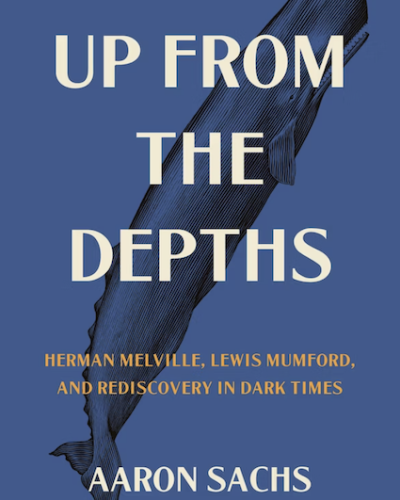
Up From the Depths
Up from the Depths tells the interconnected stories of two of the most important writers in American history—the novelist and poet Herman Melville (1819–1891) and one of his earliest biographers, the literary critic and historian Lewis Mumford (1895–1990). Deftly cutting back and forth between the writers, Aaron Sachs reveals the surprising resonances between their lives, work, and troubled times—and their uncanny relevance in our own age of crisis.
The author of Moby-Dick was largely forgotten for several decades after his death, but Mumford helped spearhead Melville’s revival in the aftermath of World War I and the 1918–1919 flu pandemic, when American culture needed a forebear with a suitably dark vision. As Mumford’s career took off and he wrote books responding to the machine age, urban decay, world war, and environmental degradation, it was looking back to Melville’s confrontation with crises such as industrialization, slavery, and the Civil War that helped Mumford to see his own era clearly. Mumford remained obsessed with Melville, ultimately helping to canonize him as America’s greatest tragedian. But largely forgotten today is one of Mumford’s key insights—that Melville’s darkness was balanced by an inspiring determination to endure.
Amid today’s foreboding over global warming, racism, technology, pandemics, and other crises, Melville and Mumford remind us that we’ve been in this struggle for a long time. To rediscover these writers today is to rediscover how history can offer hope in dark times.
https://press.princeton.edu/books/hardcover/9780691215419/up-from-the-depths
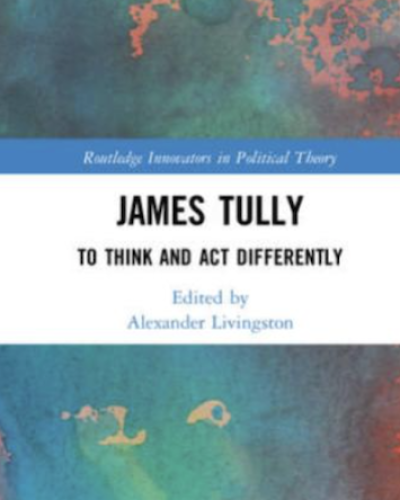
James Tully: To Think and Act Differently
https://societyhumanities.as.cornell.edu/news/alexander-livingston-his-new-edit…
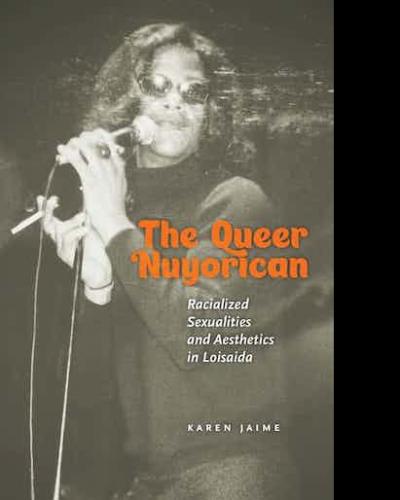
The Queer Nuyorican
One could easily overlook the Nuyorican Poets Cafe, a small, unassuming performance venue on New York City’s Lower East Side. Yet the space once hosted the likes of Victor Hernández Cruz, Allen Ginsberg, and Amiri Baraka and is widely credited as the homespace for the emergent nuyorican literary and aesthetic movement of the 1990s. Founded by a group of counterculturalist Puerto Rican immigrants and artists in the 1970s, the space slowly transformed the Puerto Rican ethnic and cultural associations of the epithet “Nuyorican,” as the Cafe developed into a central hub for an artistic movement encompassing queer, trans, and diasporic performance.
The Queer Nuyorican is the first queer genealogy and critical study of the historical, political, and cultural conditions under which the term “Nuyorican” shifted from a raced/ethnic identity marker to “nuyorican,” an aesthetic practice. The nuyorican aesthetic recognizes and includes queer poets and performers of color whose writing and performance build upon the politics inherent in the Cafe’s founding. Initially situated within the Cafe’s physical space and countercultural discursive history, the nuyorican aesthetic extends beyond these gendered and ethnic boundaries, broadening the ethnic marker Nuyorican to include queer, trans, and diasporic performance modalities.
Hip-hop studies, alongside critical race, queer, literary, and performance theories, are used to document the interventions made by queer and trans artists of color—Miguel Piñero, Regie Cabico, Glam Slam participants, and Ellison Glenn/Black Cracker—whose works demonstrate how the Nuyorican Poets Cafe has operated as a queer space since its founding. In focusing on artists who began their careers as spoken word artists and slam poets at the Cafe, The Queer Nuyorican examines queer modes of circulation that are tethered to the increasing visibility, commodification, and normalization of spoken word, slam poetry, and hip-hop theater in the United States and abroad.

The Democratic Sublime
The transition from royal to popular sovereignty during the age of democratic revolutions--from 1776 to 1848--entailed not only the reorganization of institutions of governance and norms of political legitimacy, but also a dramatic transformation in the iconography and symbolism of political power. The personal and external rule of the king, whose body was the physical locus of political authority, was replaced with the impersonal and immanent self-rule of the people, whose power could not be incontestably embodied. This posed representational difficulties that went beyond questions of institutionalization and law, extending into the aesthetic realm of visualization, composition, and form. How to make the people's sovereign will tangible to popular judgment was, and is, a crucial problem of democratic political aesthetics.
The Democratic Sublime offers an interdisciplinary exploration of how the revolutionary proliferation of popular assemblies--crowds, demonstrations, gatherings of the "people out of doors"--came to be central to the political aesthetics of democracy during the age of democratic revolutions. Jason Frank argues that popular assemblies allowed the people to manifest as a collective actor capable of enacting dramatic political reforms and change. Moreover, Frank asserts that popular assemblies became privileged sites of democratic representation as they claimed to support the voice of the people while also signaling the material plenitude beyond any single representational claim. Popular assemblies continue to retain this power, in part, because they embody that which escapes representational capture: they disrupt the representational space of appearance and draw their power from the ineffability and resistant materiality of the people's will. Engaging with a wide range of sources, from canonical political theorists (Rousseau, Burke, and Tocqueville) to the novels of Hugo, the visual culture of the barricades, and the memoirs of popular insurgents, The Democratic Sublime demonstrates how making the people's sovereign will tangible to popular judgment became a central dilemma of modern democracy, and how it remains so today.

Emancipation's Daughters
In Emancipation's Daughters, Riché Richardson examines iconic black women leaders who have contested racial stereotypes and constructed new national narratives of black womanhood in the United States. Drawing on literary texts and cultural representations, Richardson shows how five emblematic black women—Mary McLeod Bethune, Rosa Parks, Condoleezza Rice, Michelle Obama, and Beyoncé—have challenged white-centered definitions of American identity.
By using the rhetoric of motherhood and focusing on families and children, these leaders have defied racist images of black women, such as the mammy or the welfare queen, and rewritten scripts of femininity designed to exclude black women from civic participation. Richardson shows that these women's status as national icons was central to reconstructing black womanhood in ways that moved beyond dominant stereotypes. However, these formulations are often premised on heteronormativity and exclude black queer and trans women. Throughout Emancipation's Daughters, Richardson reveals new possibilities for inclusive models of blackness, national femininity, and democracy.

The Queerness of Home
From the Stonewall riots to the protests of ACT UP, histories of queer and trans politics have almost exclusively centered on public activism. In The Queerness of Home, Stephen Vider turns the focus inward, showing that the intimacy of domestic space has been equally crucial to the history of postwar LGBTQ life.
Beginning in the 1940s, LGBTQ activists looked increasingly to the home as a site of connection, care, and cultural inclusion. They struggled against the conventions of marriage, challenged the gendered codes of everyday labor, reimagined domestic architecture, and contested the racial and class boundaries of kinship and belonging. Retelling LGBTQ history from the inside out, Vider reveals the surprising ways that the home became, and remains, a charged space in battles for social and economic justice, making it clear that LGBTQ people not only realized new forms of community and culture for themselves—they remade the possibilities of home life for everyone.

Fashion and Cultural Studies
Bridging theory and practice, this accessible text considers fashion from both cultural studies and fashion studies perspectives, and addresses the growing interaction between the two fields.
Kaiser and Green use a wide range of cross-cultural case studies to explore how race, ethnicity, class, gender and other identities intersect and are produced through embodied fashion. Drawing on intersectionality in feminist theory and cultural studies, Fashion and Cultural Studies is essential reading for students and scholars.
This revised edition includes updated case studies and two new chapters. The first new chapter explores religion, spirituality, and faith in relation to style, fashion, and dress. The second offers a critique of “beauty” and considers dressed embodiment inclusive of diverse sizes, shapes and dis/abilities. Throughout the text, Kaiser and Green use a range of examples to interrogate the complex entanglements of production, regulation, distribution, consumption, and subject formation within and through fashion.
https://www.bloomsbury.com/us/fashion-and-cultural-studies-9781350104686/
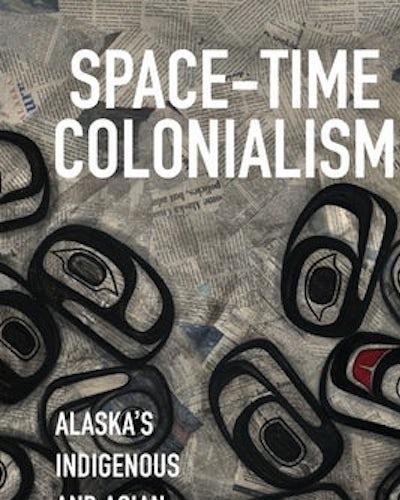
Space-Time Colonialism
As the enduring "last frontier," Alaska proves an indispensable context for examining the form and function of American colonialism, particularly in the shift from western continental expansion to global empire. In this richly theorized work, Juliana Hu Pegues evaluates four key historical periods in U.S.-Alaskan history: the Alaskan purchase, the Gold Rush, the emergence of salmon canneries, and the World War II era. In each, Hu Pegues recognizes colonial and racial entanglements between Alaska Native peoples and Asian immigrants. In the midst of this complex interplay, the American colonial project advanced by differentially racializing and gendering Indigenous and Asian peoples, constructing Asian immigrants as "out of place" and Alaska Natives as "out of time." Counter to this space-time colonialism, Native and Asian peoples created alternate modes of meaning and belonging through their literature, photography, political organizing, and sociality.
Offering an intersectional approach to U.S. empire, Indigenous dispossession, and labor exploitation, Space-Time Colonialism makes clear that Alaska is essential to understanding both U.S. imperial expansion and the machinations of settler colonialism.

Thanks for Everything (Now Get Out)
When a distressed urban neighborhood gentrifies, all the ratios change: poor to rich; Black and Brown to white; unskilled to professional; vulnerable to secure. Vacant lots and toxic dumps become condos and parks. Upscale restaurants open and pawn shops close. But the low-income residents who held on when the neighborhood was at its worst, who worked so hard to make it better, are gradually driven out. For them, the neighborhood hasn’t been restored so much as destroyed.
Tracing the history of Olneyville, a neighborhood in Providence, Rhode Island, that has traveled the long arc from urban decay to the cusp of gentrification, Joseph Margulies asks the most important question facing cities today: Can we restore distressed neighborhoods without setting the stage for their destruction? Is failure the inevitable cost of success?
Based on years of interviews and on-the-ground observation, Margulies argues that to save Olneyville and thousands of neighborhoods like it, we need to empower low-income residents by giving them ownership and control of neighborhood assets. His model for a new form of neighborhood organization—the “neighborhood trust”—is already gaining traction nationwide and promises to give the poor what they have never had in this country: the power to control their future.
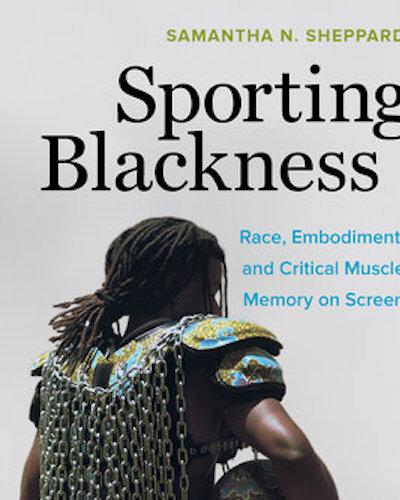
Sporting Blackness
Sporting Blackness examines issues of race and representation in sports films, exploring what it means to embody, perform, play out, and contest blackness by representations of Black athletes on screen. By presenting new critical terms, Sheppard analyzes not only “skin in the game,” or how racial representation shapes the genre’s imagery, but also “skin in the genre,” or the formal consequences of blackness on the sport film genre’s modes, codes, and conventions. Through a rich interdisciplinary approach, Sheppard argues that representations of Black sporting bodies contain “critical muscle memories”: embodied, kinesthetic, and cinematic histories that go beyond a film’s plot to index, circulate, and reproduce broader narratives about Black sporting and non-sporting experiences in American society.

José Montoya
José Montoya (1932–2013) was a leading figure in bilingual and bicultural expression drawn from barrio life as a defining feature of U.S. culture. As an artist, poet, and musician, he produced iconic works depicting pachuco and pachuca culture based on his own experiences as a youth after World War II. These include the poem “El Louie” as well as thousands of political posters and masterful sketches. Montoya cofounded the art collective Royal Chicano Air Force and helped organize for the United Farm Workers. An influential educator, he established the Barrio Art Program in the early 1970s, and taught at California State University, Sacramento.
Author Ella Maria Diaz examines a remarkable career that traversed decades, languages, media, and genres. This book is illustrated with reproductions of Montoya’s art from rarely seen archival slides and documents, as well as from private collections and the Montoya estate. Through oral histories and archival research, Diaz proposes a new model for the study of Latina/o/x artists who reject the boundaries between visual art, poetry, music, education, and community activism.
This book is distributed for the Chicano Studies Research Center at UCLA.
https://www.upress.umn.edu/book-division/books/josa-c-montoya

Four Threats
While many Americans despair of the current state of U.S. politics, most assume that our system of government and democracy itself are invulnerable to decay. Yet when we examine the past, we find that the United States has undergone repeated crises of democracy, from the earliest days of the republic to the present.
In Four Threats, Suzanne Mettler and Robert C. Lieberman explore five moments in history when democracy in the U.S. was under siege: the 1790s, the Civil War, the Gilded Age, the Depression, and Watergate. These episodes risked profound—even fatal—damage to the American democratic experiment. From this history, four distinct characteristics of disruption emerge. Political polarization, racism and nativism, economic inequality, and excessive executive power—alone or in combination—have threatened the survival of the republic, but it has survived—so far. What is unique, and alarming, about the present moment in American politics is that all four conditions exist.
This convergence marks the contemporary era as a grave moment for democracy. But history provides a valuable repository from which we can draw lessons about how democracy was eventually strengthened—or weakened—in the past. By revisiting how earlier generations of Americans faced threats to the principles enshrined in the Constitution, we can see the promise and the peril that have led us to today and chart a path toward repairing our civic fabric and renewing democracy.
https://www.cambridge.org/core/journals/perspectives-on-politics/article/four-t…
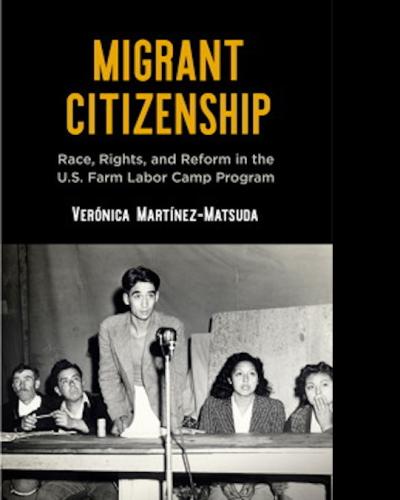
Migrant Citizenship
Today's concern for the quality of the produce on our plates has done little to guarantee U.S. farmworkers the necessary protections of sanitary housing, medical attention, and fair labor standards. The political discourse on farmworkers' rights is dominated by the view that migrant workers are not entitled to better protections because they are "noncitizens," as either immigrants or transients. Between 1935 and 1946, however, the Farm Security Administration (FSA) intervened dramatically on behalf of migrant families to expand the principles of American democracy, advance migrants' civil rights, and make farmworkers visible beyond their economic role as temporary laborers. In more than one hundred labor camps across the country, migrant families successfully worked with FSA officials to challenge their exclusion from the basic rights afforded by the New Deal.
In Migrant Citizenship, Verónica Martínez-Matsuda examines the history of the FSA's Migratory Labor Camp Program and its role in the lives of diverse farmworker families across the United States, describing how the camps provided migrants sanitary housing, full on-site medical service, a nursery school program, primary education, home-demonstration instruction, food for a healthy diet, recreational programing, and lessons in participatory democracy through self-governing councils. In these ways, she argues, the camps functioned as more than just labor centers aimed at improving agribusiness efficiency. Instead, they represented a profound "experiment in democracy" seeking to secure migrant farmworkers' full political and social participation in the United States.
In recounting this chapter in the FSA's history, Migrant Citizenship provides insights into public policy concerning migrant workers, federal intervention in poor people's lives, and workers' cross-racial movements for social justice and offers a precedent for those seeking to combat the precarity in farm labor relations today.
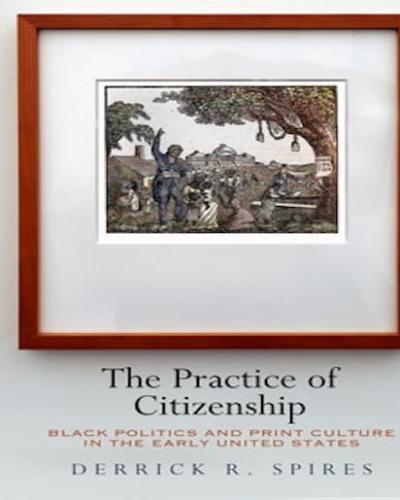
The Practice of Citizenship
In the years between the American Revolution and the U.S. Civil War, as legal and cultural understandings of citizenship became more racially restrictive, black writers articulated an expansive, practice-based theory of citizenship. Grounded in political participation, mutual aid, critique and revolution, and the myriad daily interactions between people living in the same spaces, citizenship, they argued, is not defined by who one is but, rather, by what one does.
In The Practice of Citizenship, Derrick R. Spires examines the parallel development of early black print culture and legal and cultural understandings of U.S. citizenship, beginning in 1787, with the framing of the federal Constitution and the founding of the Free African Society by Absalom Jones and Richard Allen, and ending in 1861, with the onset of the Civil War. Between these two points he recovers understudied figures such as William J. Wilson, whose 1859 "Afric-American Picture Gallery" appeared in seven installments in The Anglo-African Magazine, and the physician, abolitionist, and essayist James McCune Smith. He places texts such as the proceedings of black state conventions alongside considerations of canonical figures such as Frances Ellen Watkins Harper and Frederick Douglass.
Reading black print culture as a space where citizenship was both theorized and practiced, Spires reveals the degree to which concepts of black citizenship emerged through a highly creative and diverse community of letters, not easily reducible to representative figures or genres. From petitions to Congress to Frances Harper's parlor fiction, black writers framed citizenship both explicitly and implicitly, the book demonstrates, not simply as a response to white supremacy but as a matter of course in the shaping of their own communities and in meeting their own political, social, and cultural needs.

Free Enterprise
An incisive look at the intellectual and cultural history of free enterprise and its influence on American politics.
Throughout the twentieth century, “free enterprise” has been a contested keyword in American politics, and the cornerstone of a conservative philosophy that seeks to limit government involvement into economic matters. Lawrence B. Glickman shows how the idea first gained traction in American discourse and was championed by opponents of the New Deal. Those politicians, believing free enterprise to be a fundamental American value, held it up as an antidote to a liberalism that they maintained would lead toward totalitarian statism. Tracing the use of the concept of free enterprise, Glickman shows how it has both constrained and transformed political dialogue. He presents a fascinating look into the complex history, and marketing, of an idea that forms the linchpin of the contemporary opposition to government regulation, taxation, and programs such as Medicare.
https://yalebooks.yale.edu/book/9780300238259/free-enterprise

Fragmented Democracy
Medicaid is the single largest public health insurer in the United States, covering upwards of 70 million Americans. Crucially, Medicaid is also an intergovernmental program that yokes poverty to federalism: the federal government determines its broad contours, while states have tremendous discretion over how Medicaid is designed and implemented. Where some locales are generous and open handed, others are tight-fisted and punitive.
In Fragmented Democracy, Jamila Michener demonstrates the consequences of such disparities for democratic citizenship. Unpacking how federalism transforms Medicaid beneficiaries' interpretations of government and structures their participation in politics, the book examines American democracy from the vantage point(s) of those who are living in or near poverty, (disproportionately) Black or Latino, and reliant on a federated government for vital resources.
https://www.cambridge.org/core/books/fragmented-democracy/9A69DF1567190EF38883D…
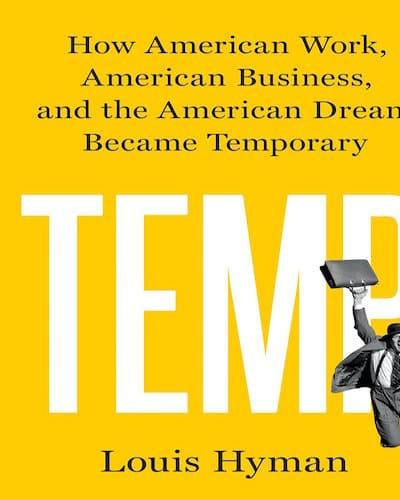
Temp
The untold history of the surprising origins of the “gig economy”–how deliberate decisions made by consultants and CEOs in the 50s and 60s upended the stability of the workplace and the lives of millions of working men and women in postwar America. Over the last fifty years, job security has cratered as the institutions that insulated us from volatility have been swept aside by a fervent belief in the market. Now every working person in America today asks the same question: how secure is my job?
In Temp, Louis Hyman explains how we got to this precarious position and traces the real origins of the gig economy: it was created not by accident, but by choice through a series of deliberate decisions by consultants and CEOs–long before the digital revolution. Uber is not the cause of insecurity and inequality in our country, and neither is the rest of the gig economy. The answer to our growing problems goes deeper than apps, further back than outsourcing and downsizing, and contests the most essential assumptions we have about how our businesses should work. As we make choices about the future, we need to understand our past.
https://www.penguinrandomhouse.com/books/554240/temp-by-louis-hyman/
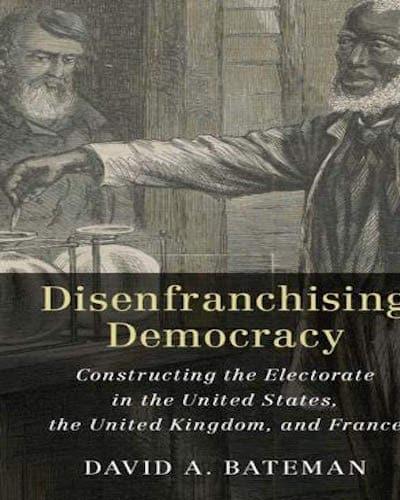
Disenfranchising Democracy
The first wave of democratization in the United States - the removal of property and taxpaying qualifications for the right to vote - was accompanied by the disenfranchisement of African American men, with the political actors most supportive of the former also the most insistent upon the latter. The United States is not unique in this respect: other canonical cases of democratization also saw simultaneous expansions and restrictions of political rights, yet this pattern has never been fully detailed or explained.
Through case studies of the USA, the UK, and France, Disenfranchising Democracy offers the first cross-national account of the relationship between democratization and disenfranchisement. It develops a political institutional perspective to explain their co-occurrence, focusing on the politics of coalition-building and the visions of political community coalitions advance in support of their goals. Bateman sheds new light on democratization, connecting it to the construction of citizenship and cultural identities.
https://www.cambridge.org/core/books/disenfranchising-democracy/CEC53B21976CC3E…

The Government-Citizen Disconnect
Americans’ relationship to the federal government is paradoxical. Polls show that public opinion regarding the government has plummeted to all-time lows, with only one in five saying they trust the government or believe that it operates in their interest. Yet, at the same time, more Americans than ever benefit from some form of government social provision. Political scientist Suzanne Mettler calls this growing gulf between people’s perceptions of government and the actual role it plays in their lives the "government-citizen disconnect." In The Government-Citizen Disconnect, she explores the rise of this phenomenon and its implications for policymaking and politics.
Drawing from original survey data which probed Americans’ experiences of 21 federal social policies -- such as food stamps, Social Security, Medicaid, and the home mortgage interest deduction -- Mettler shows that 96 percent of adults have received benefits from at least one of them, and that the average person has utilized five. Overall usage rates transcend social, economic, and political divisions, and most Americans report positive experiences of their policy experiences. However, the fact that they have benefited from these policies bears little positive effect on people’s attitudes towards government. Mettler finds that shared identities and group affiliations are more powerful and consistent influences. In particular, those who oppose welfare tend to extrapolate their unfavorable views of it to government in general. Deep antipathy toward the government has emerged as a conservative movement waged a war on social welfare policies for over forty years, even as economic inequality and benefit use increased.
Mettler finds that patterns of political participation exacerbate the government-citizen disconnect, as those holding positive views of federal programs and supporting expanded benefits have lower rates of involvement than those holding more hostile views of the government. As a result, the loudest political voice belongs to those who have benefited from policies but who give government little credit for their economic well-being, seeing their success more as a matter of their own deservingness. This contributes to the election of politicians who advocate cutting federal social programs. According to Mettler, the government-citizen disconnect frays the bonds of representative government and democracy.
The Government-Citizen Disconnect illuminates a paradox that increasingly shapes American politics. Mettler's examination of hostility toward government at a time when most Americans will at some point rely on the social benefits it provides helps us better understand the roots of today's fractious political climate.
https://www.russellsage.org/publications/government-citizen-disconnect

The Royal Chicano Air Force
The first book-length study of the Royal Chicano Air Force maps the history of this vanguard Chicano/a arts collective, which used art and cultural production as sociopolitical activism.
https://utpress.utexas.edu/books/diaz-flying-under-the-radar-with-royal-chicano…

The Disinformation Age
The Disinformation Age, beginning in the present and going back to the American colonial period, constructs an original historical explanation for the current political crisis and the reasons the two major political parties cannot address it effectively.
Commentators inside and outside academia have described this crisis with various terms ― income inequality, the disappearance of the middle-class, the collapse of the two-party system, and the emergence of a corporate oligarchy. While this book uses such terminology, it uniquely provides a unifying explanation for the current state of the union by analyzing the seismic rupture of political rhetoric from political reality used within discussion of these issues. In advancing this analysis, the book provides a term for this rupture, Disinformation, which it defines not as planned propaganda but as the inevitable failure of the language of American Exceptionalism to correspond to actual history, even as the two major political parties continue to deploy this language. Further, in its final chapter this book provides a way out of this political cul-de-sac, what it terms "the limits of capitalism’s imagination," by "thinking from a different place" that is located in the theory and practice of the Indigenous peoples of the Americas.
https://www.cambridge.org/core/books/disinformation-age/1F4751119C7C4693E514C24…

The Refugee Challenge in Post-Cold War America
Maria Cristina Garcia has published The Refugee Challenge in Post-Cold War America (Oxford University Press). Alan M. Kraut, past president of the Organization of American Historians, states that “This volume stands alone as the best history of U.S. refugee policy in post-Cold War America.
Garcia chronicles the struggles of Russian refuseniks, Chinese dissidents, Rwandans fleeing genocide, as well as Haitian and Cuban boat people among those seeking sanctuary from persecution. Her meticulous research and incisive analysis illuminates the confusions and inadequacies of United States refugee policy under Republican and Democratic presidents alike.” Carl Bon Tempos, author of Americans at the Gate, states that “This book deftly explains how domestic politics, economic circumstances, and national security concerns have shaped what the United States has done –and not done- in the face of multiple refugee crises in the two decades after the end of the Cold War’. He describes her book as “masterful and elegant”.
https://oxford.universitypressscholarship.com/view/10.1093/oso/9780190655303.00…

Damn Great Empires!
Damn Great Empires! offers a new perspective on the works of William James by placing his encounter with American imperialism at the center of his philosophical vision. This book reconstructs James's overlooked political thought by treating his anti-imperialist Nachlass -- his speeches, essays, notes, and correspondence on the United States' annexation of the Philippines -- as the key to unlocking the political significance of his celebrated writings on psychology, religion, and philosophy. It shows how James located a craving for authority at the heart of empire as a way of life, a craving he diagnosed and unsettled through his insistence on a modern world without ultimate foundations.
Livingston explores the persistence of political questions in James's major works, from his writings on the self in The Principles of Psychology to the method of Pragmatism, the study of faith and conversion inThe Varieties of Religious Experience, and the metaphysical inquiries in A Pluralistic Universe.
https://global.oup.com/academic/product/damn-great-empires-9780190237165?cc=us&…

We Are an African People
An intellectual history of subaltern education, a critical analysis of the fate of Black Power ideologies in the post-segregation era, and a portrait of African-American self-activity at the neighborhood level.
Puts forth a groundbreaking explanation of Black Power's preoccupation with forging a new people. Spans the last four decades of the 20th century with a focus on the 1970s.
https://oxford.universitypressscholarship.com/view/10.1093/acprof:oso/978019986…

Arcadian America
Perhaps America's best environmental idea was not the national park but the garden cemetery, a use of space that quickly gained popularity in the mid-nineteenth century. Such spaces of repose brought key elements of the countryside into rapidly expanding cities, making nature accessible to all and serving to remind visitors of the natural cycles of life. In this unique interdisciplinary blend of historical narrative, cultural criticism, and poignant memoir, Aaron Sachs argues that American cemeteries embody a forgotten landscape tradition that has much to teach us in our current moment of environmental crisis.
https://yalebooks.yale.edu/book/9780300205886/arcadian-america

The Half Has Never Been Told
Americans tend to cast slavery as a pre-modern institution–the nation’s original sin, perhaps, but isolated in time and divorced from America’s later success. But to do so robs the millions who suffered in bondage of their full legacy. As historian Edward E. Baptist reveals in The Half Has Never Been Told, the expansion of slavery in the first eight decades after American independence drove the evolution and modernization of the United States. In the span of a single lifetime, the South grew from a narrow coastal strip of worn-out tobacco plantations to a continental cotton empire, and the United States grew into a modern, industrial, and capitalist economy.

Acts of Gaiety
Acts of Gaiety explores the mirthful modes of political performance by LGBT artists, activists, and collectives that have inspired and sustained deadly serious struggles for revolutionary change. The book explores antics such as camp, kitsch, drag, guerrilla theater, zap actions, rallies, manifestos, pageants, and parades alongside more familiar forms of "legitimate theater." Against queer theory's long-suffering romance with mourning and melancholia and a national agenda that urges homosexuals to renounce pleasure if they want to be taken seriously by mainstream society, Acts of Gaiety seeks to reanimate notions of "gaiety" as a political value for LGBT activism.
The book mines the archives of lesbian-feminist activism of the 1960s-70s, highlighting the outrageous gaiety that lay at the center of the social and theatrical performances of the era and uncovering original documents long thought to be lost. Juxtaposing historical figures such as Valerie Solanas and Jill Johnston with more recent performers and activists (including Hothead Paisan, Bitch & Animal, and the Five Lesbian Brothers), Warner shows how reclaiming this largely discarded and disavowed past elucidates possibilities for being and belonging. Acts of Gaiety explores the mutually informing histories of gayness as politics and as joie de vivre, along with the centrality of liveliness to queer performance and protest.

Debtor Nation
Before the twentieth century, personal debt resided on the fringes of the American economy, the province of small-time criminals and struggling merchants. By the end of the century, however, the most profitable corporations and banks in the country lent money to millions of American debtors. How did this happen? The first book to follow the history of personal debt in modern America, Debtor Nation traces the evolution of debt over the course of the twentieth century, following its transformation from fringe to mainstream--thanks to federal policy, financial innovation, and retail competition.
https://press.princeton.edu/books/paperback/9780691156163/debtor-nation

Handbook of Latinos and Education
Providing a comprehensive review of rigorous, innovative, and critical scholarship relevant to educational issues which impact Latinos, this Handbook captures the field at this point in time. Its unique purpose and function is to profile the scope and terrain of academic inquiry on Latinos and education. Presenting the most significant and potentially influential work in the field in terms of its contributions to research, to professional practice, and to the emergence of related interdisciplinary studies and theory, the volume is organized around five themes:
- history, theory, and methodology
- policies and politics
- language and culture
- teaching and learning
- resources and information.
Centro, Journal of the Center for Puerto Rican Studies states that "This edited volume is a very extensive and detailed compilation of historical and current scholarship about the education of Latinos in the United States. The list of nearly one hundred contributors reads like a 'Who’s Who' in the field of Latino studies in general, and Latino education in particular.
https://www.routledge.com/Handbook-of-Latinos-and-Education-Theory-Research-and…

Citizens of a Christian Nation
Citizens of a Christian Nation brings together for the first time African American and Chinese American religious histories through a multitiered local, regional, national, and even transnational analysis of race, nationalism, and evangelical thought and practice.

The Edge of the Woods
In The Edge of the Woods: Iroquoia, 1534-1701, Jon Parmenter argues that the extensive spatial mobility engaged in by Haudenosaunee people after their first contact with Europeans represented a geographical expression of Haudenosaunee social, political, and economic priorities. Parmenter drew on archival and published documents in several languages, archaeological data, published Haudenosaunee oral traditions, and GIS technology to reconstruct the Haudenosaunee settlement landscape and the paths of human mobility that built and sustained it.

Buying Power
A definitive history of consumer activism, Buying Power traces the lineage of this political tradition back to our nation’s founding, revealing that Americans used purchasing power to support causes and punish enemies long before the word boycott even entered our lexicon. Taking the Boston Tea Party as his starting point, Lawrence Glickman argues that the rejection of British imports by revolutionary patriots inaugurated a continuous series of consumer boycotts, campaigns for safe and ethical consumption, and efforts to make goods more broadly accessible. He explores abolitionist-led efforts to eschew slave-made goods, African American consumer campaigns against Jim Crow, a 1930s refusal of silk from fascist Japan, and emerging contemporary movements like slow food.
Uncovering previously unknown episodes and analyzing famous events from a fresh perspective, Glickman illuminates moments when consumer activism intersected with political and civil rights movements. He also sheds new light on activists’ relationship with the consumer movement, which gave rise to lobbies like the National Consumers League and Consumers Union as well as ill-fated legislation to create a federal Consumer Protection Agency.
https://press.uchicago.edu/ucp/books/book/chicago/B/bo6682337.html

The Immigrant Scene
Haenni reveals how theaters in New York created ethnic entertainment that shaped the culture of the United States in the early twentieth century. Considering the relationship between leisure and mass culture, The Immigrant Scene develops a new picture of the metropolis in which the movement of people, objects, and images on-screen and in the street helped residents negotiate the complexities of modern times.
In analyzing how communities engaged with immigrant theaters and the nascent film culture in New York City, Haenni traces the ways in which performance and cinema provided virtual mobility—ways of navigating the socially complex metropolis—and influenced national ideas of immigration, culture, and diversity in surprising and lasting ways.
https://www.upress.umn.edu/book-division/books/the-immigrant-scene
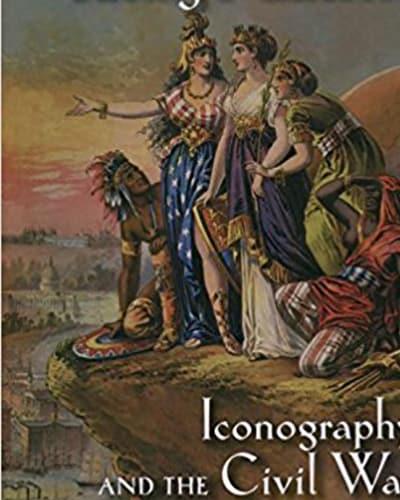
Facing America
Facing America: Iconography and the Civil War investigates and explains the changing face of America during the Civil War. To conjure a face for the nation, author Shirley Samuels also explores the body of the nation imagined both physically and metaphorically, arguing that the Civil War marks a dramatic shift from identifying the American nation as feminine to identifying it as masculine. Expressions of such a change appear in the allegorical configurations of nineteenth-century American novels, poetry, cartoons, and political rhetoric. Because of the visibility of war's assaults on the male body, masculine vulnerability became such a dominant facet of national life that it practically obliterated the visibility of other vulnerable bodies.
The simultaneous advent of photography and the Civil War in the nineteenth century may be as influential as the conjoined rise of the novel and the middle class in the eighteenth century. Both advents herald a changed understanding of how a transformative media can promote new cultural and national identities. Bodies immobilized because of war's practices of wounding and death are also bodies made static for the camera's gaze. The look of shock on the faces of soldiers photographed in order to display their wounds emphasizes the new technology of war literally embodied in the impact of new imploding bullets on vulnerable flesh. Such images mark both the context for and a counterpoint to the "look" of Walt Whitman as he bends over soldiers in their hospital beds. They also provide a way to interpret the languishing male heroes of novels such as August Evans's Macaria (1864), a southern elegy for the sundering of the nation. This book crucially shows how visual iconography affects the shift in postbellum gendered and racialized identifications of the nation.

All Shook Up
The rise of rock 'n roll--and the outraged reception to it--in fact can tell us a lot about the values of the United States in the 1950s, a decade that saw a great struggle for the control of popular culture. Altschuler shows, in particular, how rock's "switchblade beat" opened up wide fissures in American society along the fault-lines of family, sexuality, and race. For instance, the birth of rock coincided with the civil rights movement and brought "race music" into many white homes for the first time. Elvis freely credited blacks with originating the music he sang and some of the great early rockers were African American, most notably, Little Richard and Chuck Berry. In addition, rock celebrated romance and sex, rattled the reticent by pushing sexuality into the public arena, and mocked deferred gratification and the obsession with work of men in gray flannel suits. And it delighted in the separate world of the teenager and deepened the divide between the generations, helping teenagers differentiate themselves from others. Altschuler includes vivid biographical sketches of the great rock 'n rollers, including Elvis Presley, Fats Domino, Chuck Berry, Little Richard, Jerry Lee Lewis, and Buddy Holly--plus their white-bread doppelgangers such as Pat Boone.
Rock 'n roll seemed to be everywhere during the decade, exhilarating, influential, and an outrage to those Americans intent on wishing away all forms of dissent and conflict. As vibrant as the music itself, All Shook Up reveals how rock 'n roll challenged and changed American culture and laid the foundation for the social upheaval of the sixties.
https://www.penguinrandomhouse.com/books/128866/all-shook-up-by-shelley-pearsal…

In the Devil's Snare
Award-winning historian Mary Beth Norton reexamines the Salem witch trials in this startlingly original, meticulously researched, and utterly riveting study.
In 1692 the people of Massachusetts were living in fear, and not solely of satanic afflictions. Horrifyingly violent Indian attacks had all but emptied the northern frontier of settlers, and many traumatized refugees—including the main accusers of witches—had fled to communities like Salem. Meanwhile the colony’s leaders, defensive about their own failure to protect the frontier, pondered how God’s people could be suffering at the hands of savages. Struck by the similarities between what the refugees had witnessed and what the witchcraft “victims” described, many were quick to see a vast conspiracy of the Devil (in league with the French and the Indians) threatening New England on all sides. By providing this essential context to the famous events, and by casting her net well beyond the borders of Salem itself, Norton sheds new light on one of the most perplexing and fascinating periods in our history.
https://www.penguinrandomhouse.com/books/122784/in-the-devils-snare-by-mary-bet…

Extinct Lands, Temporal Geographies
A train station becomes a police station; lands held sacred by Apaches and Mexicanos are turned into commercial and residential zones; freeway construction hollows out a community; a rancho becomes a retirement community—these are the kinds of spatial transformations that concern Mary Pat Brady in Extinct Lands, Temporal Geographies, a book bringing together Chicana feminism, cultural geography, and literary theory to analyze an unusual mix of Chicana texts through the concept of space. Beginning with nineteenth-century short stories and essays and concluding with contemporary fiction, this book reveals how Chicana literature offers a valuable theoretics of space.
Rafael Pérez-Torres, author of Movements in Chicano Poetry: Against Myths, Against Margins states that "Extinct Lands, Temporal Geographies is an outstanding work that reveals the connection between Chicana bodies, literary texts, and geopolitical space. It offers a conceptual framework based on theories of spatialization that provide a greater understanding of what Chicana writing does and why it is significant to our understanding of contemporary U.S. culture. Nobody else does what Mary Pat Brady does so well here."
https://www.dukeupress.edu/extinct-lands-temporal-geographies

Medicalizing Ethnicity
In Medicalizing Ethnicity, Vilma Santiago-Irizarry shows how commendable intentions can produce unintended consequences. Santiago-Irizarry conducted ethnographic fieldwork in three bilingual, bicultural psychiatric programs for Latino patients at public mental health facilities in New York City. The introduction of "cultural sensitivity" in mental health clinics, she concludes, led doctors to construct essentialized, composite versions of Latino ethnicity in their drive to treat mental illness with sensitivity.
The author demonstrates that stressing Latino differences when dealing with patients resulted not in empowerment, as intended, but in the reassertion of Anglo-American standards of behavior in the guise of psychiatric categories by which Latino culture was negatively defined. For instance, doctors routinely translated their patients' beliefs in the Latino religious traditions of espiritismo and Santería into psychiatric terms, thus treating these beliefs as pathologies.
Noorfarah Merali, University of Alberta. Journal of International Migration and Integration states that "The major strength of this book is the high level of critical analysis demonstrated by the application of an anthropological perspective to the field of mental health. . . . This book represents an important contribution to the conceptualization and incorporation of culture in the field of mental health.
https://www.cornellpress.cornell.edu/book/9780801487521/medicalizing-ethnicity/…
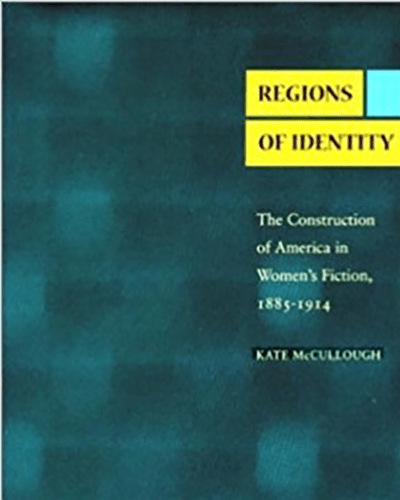
Regions of Identity
Examining turn-of-the-century American women s fiction, the author argues that this writing played a crucial role in the production of a national fantasy of a unified American identity in the face of the racial, regional, ethnic, and sexual divisions of the period.
Contributing to New Americanist perspectives of nation formation, the book shows that these writers are central to American literary discourses for reconfiguring the relationship among constituent regions in order to reconfigure the nation itself. Analyzing fiction by Sarah Orne Jewett, Florence Converse, Pauline Hopkins, Mar'a Amparo Ruiz de Burton, Kate Chopin, and Sui Sin Far, the book foregrounds the ways each writer s own location on the grid of American identities shapes her attempt to forge an inclusive narrative of America. This disparate group of writers Northerners, Southerners, Californios, African Americans, Chinese Americans, Anglo Americans, heterosexuals, and lesbians reflects the widespread nature of concerns over national identity and the importance of regions to representations of that identity.
https://www.routledge.com/Chosen-Legacies-Heritage-in-Regional-Identity/Egberts…
